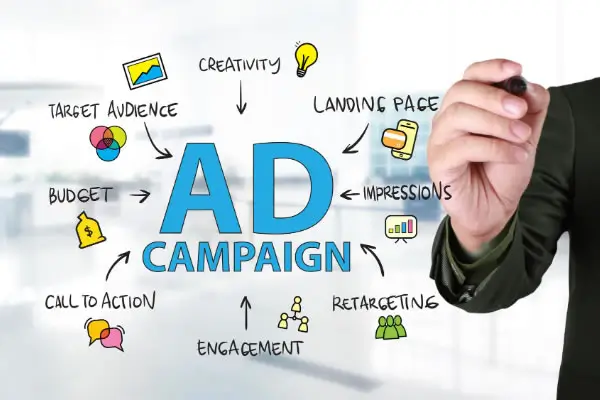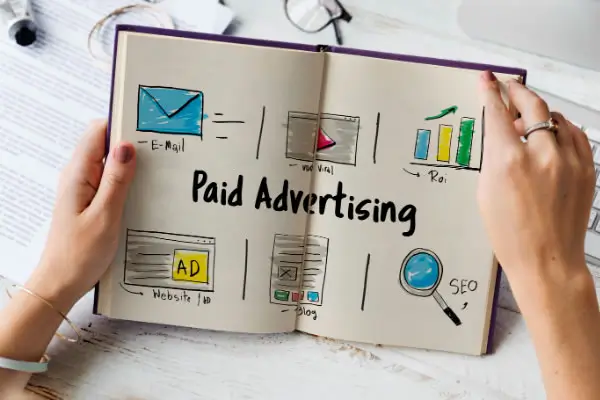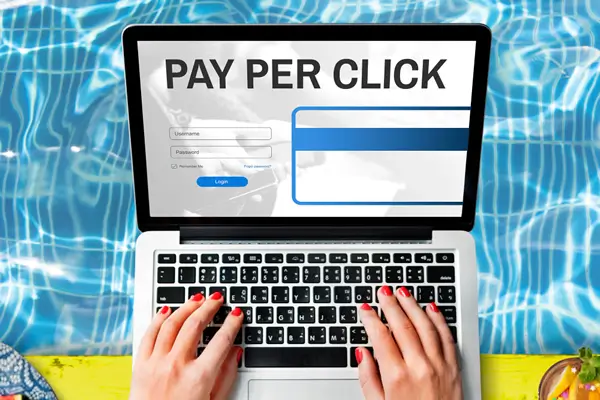Cost to Advertise with Google
The cost to advertise with Google Ads varies depending on several factors, including your industry, target audience, keywords, competition, and the quality of your ads and landing pages. Google Ads operates on a pay-per-click (PPC) model, where you set a budget for your campaigns and pay only when someone clicks on your ad.
You can set a daily budget to control your spending, and Google provides tools like keyword planner to estimate the cost per click (CPC) for different keywords. CPC can range from a few cents to several dollars or more, depending on the factors mentioned earlier.
Overall, there’s no fixed cost to advertise with Google Ads, as it’s highly customizable and depends on your specific campaign goals and targeting. It’s important to set a budget that aligns with your marketing objectives and continuously optimize your campaigns to get the best return on investment (ROI).

Should I Advertise with Google?
Deciding whether to advertise with Google Ads depends on various factors, including your business goals, target audience, budget, and competition. Here are some considerations to help you make an informed decision:
- Reach: Google is one of the largest search engines globally, with billions of searches conducted every day. Advertising on Google Ads can help you reach a vast audience actively searching for products or services like yours.
- Targeting: Google Ads offers sophisticated targeting options, allowing you to reach users based on keywords, demographics, interests, location, and more. This precise targeting can help you reach the right audience and maximize your advertising ROI.
- Cost: Google Ads operates on a pay-per-click (PPC) model, meaning you only pay when someone clicks on your ad. You have control over your budget and can set daily limits to manage your spending. However, costs can vary based on factors like competition and keyword competitiveness.
- Competition: Depending on your industry, there may be significant competition for keywords, driving up the cost per click. It’s essential to research your competitors and assess the feasibility of advertising on Google Ads within your budget.
- Campaign Goals: Determine your campaign objectives, whether it’s driving website traffic, generating leads, increasing sales, or building brand awareness. Google Ads offers various campaign types and ad formats tailored to different goals.
- Website Quality: Before advertising on Google Ads, ensure that your website is user-friendly, mobile-responsive, and optimized for conversions. A well-designed landing page can help maximize the effectiveness of your ads and improve your return on investment.
- Tracking and Optimization: Google Ads provides robust tracking and analytics tools to measure the performance of your campaigns. Regular monitoring and optimization are crucial to improving your ad performance and achieving your goals.
Ultimately, whether you should advertise with Google Ads depends on your specific circumstances and objectives. It’s often beneficial to start with a small budget, test different strategies, and analyze the results before scaling your advertising efforts. If you’re unsure, you may consider consulting with a digital marketing expert to help you develop a tailored advertising strategy.

How does Google Advertising Work?
Google Ads works on a pay-per-click (PPC) auction-based system, where advertisers bid on keywords relevant to their products or services to display ads on Google’s search engine results pages (SERPs) and other Google properties. Here’s how it works in more detail:
- Keyword Selection: Advertisers choose relevant keywords or search terms that they want their ads to appear for when users search on Google. These keywords should be aligned with the products or services they offer.
- Ad Creation: Advertisers create text, image, or video ads using the Google Ads platform. These ads typically include a headline, a description, and a link to a landing page. Advertisers can also specify ad extensions, such as site links, callouts, and location information, to enhance their ads.
- Bid Strategy: Advertisers set a maximum bid, representing the highest amount they’re willing to pay for a click on their ad. Google Ads offers various bidding strategies, including manual CPC (cost-per-click) bidding, automated bidding, and enhanced CPC.
- Ad Auction: When a user enters a search query on Google, Google Ads runs an auction to determine which ads to show and in what order. The auction takes into account factors such as bid amount, ad quality, and relevance.
- Ad Rank: Google calculates an Ad Rank for each ad based on the bid amount, ad quality (determined by factors like expected click-through rate, ad relevance, and landing page experience), and ad extensions. Ad Rank determines the position of the ad on the search results page.
- Ad Display: Ads that win the auction are displayed on Google’s search results pages above or below the organic search results, as well as on other Google properties like YouTube, Gmail, and partner websites within the Google Display Network.
- Cost and Billing: Advertisers are charged only when someone clicks on their ad (hence the term pay-per-click). The actual cost per click (CPC) varies based on factors like bid amount, ad quality, and competition. Advertisers can set a daily budget to control their spending and monitor their ad performance using Google Ads’ reporting tools.
- Performance Monitoring and Optimization: Advertisers can track the performance of their ads in real-time using Google Ads’ reporting and analytics tools. They can analyze metrics such as click-through rate (CTR), conversion rate, and return on investment (ROI) to optimize their campaigns for better results.
Overall, Google Ads provides advertisers with a powerful platform to reach potential customers at the moment they’re searching for products or services like theirs, driving targeted traffic to their websites and helping them achieve their marketing objectives.


Which is the Most Popular Advertising Platform?
Google Ads tends to be the most popular advertising platform among businesses due to its widespread reach, advanced targeting options, and powerful analytics tools. It allows advertisers to display ads across Google’s vast network, including search results, websites, YouTube, and more.
Facebook Ads and Instagram Ads, both owned by Meta Platforms (formerly Facebook), are also highly popular choices, particularly for businesses targeting specific demographics or engaging in social media marketing. These platforms offer extensive audience targeting options based on user demographics, interests, behavior, and more.
Bing Ads, while less popular than Google Ads, still holds a significant market share, particularly in certain industries or regions. It can be an effective advertising platform for reaching audiences who use the Bing search engine.
Ultimately, the popularity of each platform can vary depending on factors such as the target audience, advertising goals, budget, and industry. Many businesses use a combination of these platforms to maximize their reach and effectiveness in reaching their target audience.
NetQwik is a web design and SEO company headquartered in Ashburn, Virginia. We are a one stop web solutions company and operate out of our offices in Ashburn, Fairfax, Richmond, Spotsylvania, Norfolk, Northern Virginia.
We have been rated as one of the best SEO agencies in Northern Virginia. Our services include web design, e-Commerce websites, local SEO, search engine optimization, social media marketing, content marketing, digital marketing, domain names and hosting, we provide it all.
If you are looking for a Northern Virginia SEO and web design company to launch your next project, give us call at 800-657-5432 or fill out our contact form for a free consultation.


